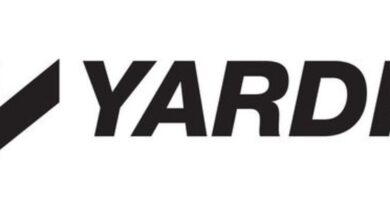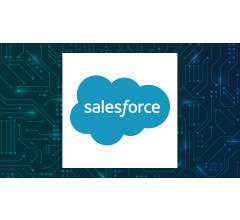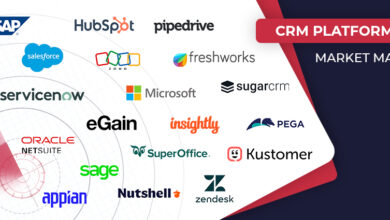Pipedrive vs. HubSpot: Which is best in 2024?

For small and medium-sized businesses (SMBs), having affordable and effective customer relationship management (CRM) software can be a game-changer. It allows sales, marketing and customer support teams to access all customer or client information readily and facilitates easy and swift communication. Low conversion rates, ineffective communication and poor customer service ratings are all pain points that a top-notch CRM can help your business address.
Below, we compare and contrast Pipedrive vs. HubSpot, two of the most popular CRMs on the market, to help you make a CRM decision for your business.
Starting paid plan price
$10 per user per month (billed annually with a minimum of 3 users)
Ease of use (based on user reviews)
Excellent
Starting paid plan price
$18 per month
Ease of use (based on user reviews)
Above average
Pipedrive vs. HubSpot snapshot
Pricing and plans
Pipedrive and HubSpot also offer Enterprise plans, which we aren’t covering in this guide.
Pipedrive
Pipedrive has four pricing plans for small and medium-sized businesses: Essential, Advanced, Professional and Power. The Essential plan costs $24 per user per month if billed monthly (it drops to $14 when billed annually). This first tier includes the service’s comprehensive lead and project management platform but doesn’t have many extra features, like the AI-powered sales assistant or email/video call scheduling.
The Advanced tier introduces email sync and templates, group emailing, an automation builder, meeting scheduling and Pipedrive live chat support. It also triples your number of open deals and custom fields while doubling the number of reports a user can generate, unlocking useful communications tools.
Next is the Professional tier (which Pipedrive says is its most popular plan), which includes 100,000 open deals, 300 custom fields, 150 reports per user and 60 active automations, a sizable increase from the previous two tiers. More importantly, it introduces the full capability of Pipedrive’s AI Sales Assistant, which provides suggestions to streamline operations.
The last pricing tier targeted to SMBs is Power. This tier includes Pipedrive’s project management tool (it’s only available as an add-on in previous plans). Users also receive extra usage limits and increased control over account permissions, and all Power subscribers have access to Pipedrive’s phone support.
HubSpot
HubSpot doesn’t offer as many different pricing tiers as Pipedrive. What distinguishes HubSpot is its free option, which comes with a surprising number of features. It has up to three reporting dashboards, one deal pipeline per account, basic integrations and decent emailing functionality, albeit with caveats like a HubSpot watermark. So, if you’re on a budget but are looking for a CRM, you can use these free tools. Keep in mind, however, that it only supports a max of five users.
When it comes to paid tiers, HubSpot offers the Sales Hub Starter and Sales Hub Professional plans. The former costs $20 per user per month when paid monthly (dropping to $15 with annual billing), while the latter costs $100 per user per month (dropping to $90 for annual billing), which is a stark difference. Both paid tiers have access to extra features, such as automation, advanced analytics and reporting, one-on-one technical support and increased data usage. The Professional plan also adds custom reporting, coaching tools, prospecting workspace and forecasting, among other features.
Related: Our guide to HubSpot pricing in 2024
Verdict: HubSpot’s free tier is great, but Pipedrive offers flexibility
For budget-conscious small businesses, having a free tool available can be invaluable. However, for those looking to invest in a comprehensive CRM, Pipedrive offers a larger variety of plans so you can choose which best suits your needs in terms of pricing and capabilities. HubSpot’s pricing plan isn’t as flexible, and Pipedrive’s Power tier (its most expensive) is considerably cheaper than HubSpot’s Sales Hub Professional plan.
Key CRM features
Both services offer solid lead and client management features and supplement them with extras to help your sales team. What features you’ll have access to depends on which tier you purchase, as both services lock advanced features behind paywalls.
Pipedrive
Pipedrive is a comprehensive platform that serves as a centralized hub for your sales team’s operations. Having all customer information and communications in easily accessible dashboards allows you to make more informed business decisions and streamline workflows. Pipedrive’s key CRM features include lead and project management, automations and advanced analytics.
Overall, Pipedrive’s interface makes it easy for the sales team to access all the tools they need to learn about a customer, reach out to a prospect or close deals. Its custom dashboards and advanced reports can inform you where to improve and tweak your operations.
HubSpot
HubSpot’s CRM software — which you can find under the sales software tab on the company’s website — includes contact management, deal pipeline and meeting scheduling features in all tiers. Paid subscriptions unlock more tools, such as sales automation and content analytics in the Starter tier and prospecting and lead management, forecasting and custom reporting in the Professional tier.
When you first enter the HubSpot platform, you’ll notice many interfaces and dashboards. A few features, like most of the Marketing and Content dashboards, are locked behind separate paywalls that can drive up costs quickly. Try the software with the free plan first to avoid unnecessary fees.
Verdict: Tie, but HubSpot wins if you’re on a tight budget
Ultimately, the best CRM software options on the market offer similar core features. Both Pipedrive and HubSpot provide comprehensive client management tools, data analytics, deal pipelines and workflow dashboards. However, one of the main differences is that HubSpot offers some of these features plus decent communication functionality in its free plan.
Integrations
Both Pipedive and HubSpot have large app marketplaces, but how do their offerings compare?
Pipedrive
Pipedrive has a marketplace with 400-plus apps to install and customize your workflow. These tools can help your business with various functions, from automation to customer service. Users navigate the marketplace, view detailed descriptions and screenshots and install tools with one click.
The marketplace hosts many popular workflow and management applications, such as Zapier, Zoom and Gmail. Keep in mind that some apps may require a separate subscription. Pipedrive has a free API with every subscription tier, which you can use to integrate custom or other tools not already in the marketplace.
HubSpot
HubSpot offers what it calls the HubSpot Ecosystem, which includes the template marketplace for website themes and modules, the app marketplace for third-party integrations and the solutions directory where you can hire HubSpot partners to help tailor your workflow. These integrations cover all aspects of your business and can help you create a website, market services or set up customer service operations. Like Pipedrive, HubSpot allows developers to create their own integrations with its API.
As far as third-party integrations go, HubSpot has over 1,600 of them. As with Pipeline, some are free and others charge monthly, yearly or one-time fees. Zapier, Google, Outlook, Slack and Asana are just a handful of the tools you can connect.
Verdict: HubSpot wins due to its more comprehensive integration ecosystem
The HubSpot app marketplace has well over a thousand third-party apps to install alongside its template marketplace and solutions directory. Any popular app on Pipedrive is also available on HubSpot. Additionally, it’s easier to customize your workflow with HubSpot due to the sheer availability of apps and templates.
AI and automation
Both companies are fully embracing the AI and automation hype. Below, we’ll compare and contrast the AI functionality of Pipedrive vs. HubSpot and discuss how it can help your business’s CRM workflow.
Pipedrive
Pipedrive is heavily promoting its AI Sales Assistant service — a powerful sidekick that analyzes your business’s data and operations to extract insights and package them into actionable recommendations. The AI Sales Assistant can help forecast revenue, remind you of prospects and deals, suggest useful actions and identify deal bottlenecks, among other tasks. All of the assistant’s recommendations and insights are located in a pop-up dashboard that appears when you click on the light bulb in the top right corner.
Automations help teams stay focused by automating mundane tasks like creating sales workflows or completing administrative tasks. This allows employees to spend more time on strategic, impactful work like closing deals. These automations — which can be custom or templated — may not be intuitive to set up, so we recommend taking time to learn more about the feature (via this Pipedrive video, for example). Utilizing both the AI Sales Assistant and automation processes can help boost productivity across the sales team.
HubSpot
HubSpot’s generative AI focuses more on content, such as providing SEO recommendations, creating summaries and auto-generating workflow descriptions. However, its chatbot, ChatSpot, can provide insights, suggested prompts and real-time data.
Unlike Pipedrive, HubSpot doesn’t provide automation templates. Instead, you’ll have to set them up yourself or find a template on the app marketplace. Once set up, these automations can streamline workflows. You can set up trigger events to automate follow-up and data-entry tasks, such as updating deal statuses or assigning leads to team members.
Verdict: Pipedrive’s AI provides more value
Pipedrive’s AI Sales Assistant, while tucked away in a hidden dashboard, is useful for making the most out of your processes and workflows. Overall, it’s more useful for a sales team compared to HubSpot’s generative AI and chatbot.
Reporting and analytics
Data drives decision-making, so CRM software must enable users to generate detailed real-time reports. Let’s evaluate how each service performs in terms of reporting and analytics.
Pipedrive
Pipedrive emphasizes visual dashboards so businesses can easily identify potential issues and make data-driven decisions. For example, Pipedrive can extract data to highlight cross-selling and upselling trends so you can power your growth. Everything is organized in one tab, making accessing custom reports, insights and analytics easy.
HubSpot
HubSpot’s analytics tab has various forecasts, analytics and insights that you can generate or create. However, this tab applies to all of HubSpot’s software, so some material might not be relevant to you. For example, you can generate reports related to blog content that don’t apply to sales operations, leading to a cluttered analytics tab.
Verdict: Pipedrive has more focused and relevant analytics
Pipedrive’s analytics tab is well-organized and focused on sales, deal management and CRM. Conversely, although HubSpot has a large array of analytics and forecasts you can generate, they’re scattered and not CRM-specific.
Summary: A tie between Pipedrive vs. HubSpot
Both services do well to differentiate themselves and offer unique features. However, although we rank HubSpot higher (powered by its free plan) in our best CRM software list, it’s important to evaluate your business needs, goals and budget before investing in a CRM.
When should you choose Pipedrive?
Before choosing Pipedrive, have a budget ready, since it doesn’t offer any free plans. Despite this, it has better price flexibility than HubSpot, so you can find the right tier for your business. Pipedrive offers more powerful AI, easier-to-use automations and more in-depth reporting.
When should you choose HubSpot?
HubSpot’s CRM is valuable for small businesses because of its free plan. You get the foundations of a powerful CRM for no cost, making it a great choice for businesses just starting out. Additionally, the service has many more third-party integrations than Pipedrive, meaning you can customize your CRM to fit your needs and goals.
Starting paid plan price
$10 per user per month (billed annually with a minimum of 3 users)
Ease of use (based on user reviews)
Excellent
Starting paid plan price
$18 per month
Ease of use (based on user reviews)
Above average
Frequently asked questions (FAQs)
Yes, HubSpot works with Pipedrive and vice versa. You’ll need to integrate the apps via your software provider’s third-party marketplace. This data sync service is for transitioning from one service to the other. Make sure you don’t pay for both software simultaneously.
HubSpot places higher in our CRM guides, but deciding between Pipedrive vs. HubSpot really comes down to your business’s needs. Pipedrive offers more pricing/plan tiers to serve a diverse range of CRM needs, but HubSpot has a free plan that is great for small businesses or those just starting out with a CRM. Analyze which service fits your budget best and satisfies your business needs.
Our best CRM software list includes HubSpot and Pipedrive, but neither is our first pick. Instead, we recommend Apptivo. Its affordable price (starting at $15 per month per user when paid annually) and codeless customizable apps make it a powerful tool for any small business. Apptivo has a lengthy 30-day free trial to fully explore the service before committing to it. Unlike HubSpot and Pipedrive, Apptivo has 24/7 customer support at every price tier and includes a comprehensive mobile app.
Yes, both services integrate with Mailchimp. To integrate the service, search for it in your software provider’s third-party app marketplace. Click on Mailchimp to read the app’s description and view screenshots. Lastly, click install and it should appear in your CRM interface.
Yes, both services integrate with Outlook. On Pipedrive, there are two third-party apps related to Outlook. The first is called “Outlook Connector — Pipelook,” which is the one you’re looking for. For HubSpot, simply install the Outlook third-party app.
Yes, both services integrate with QuickBooks. Search for the third-party app in the app marketplace and install it. After installation is completed, you’ll find it on your CRM platform.






